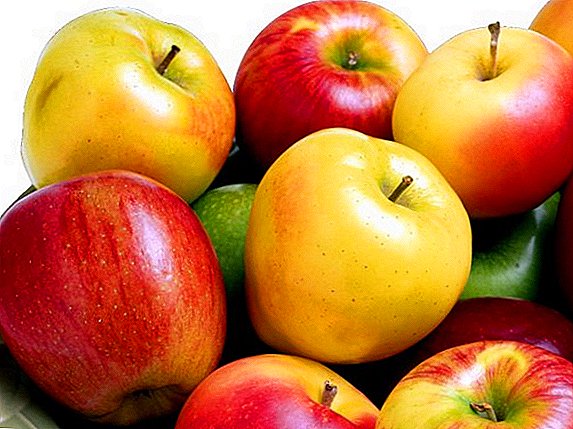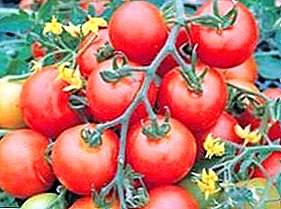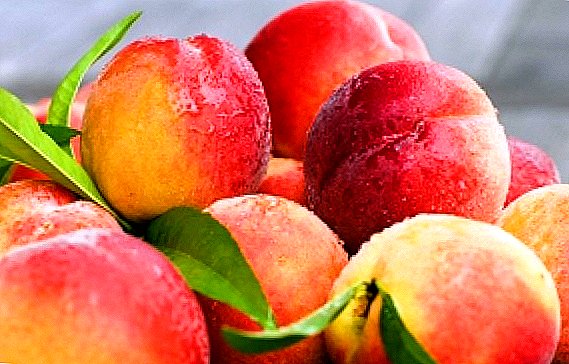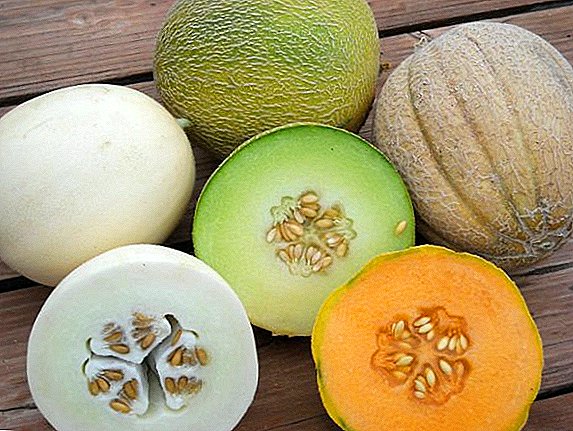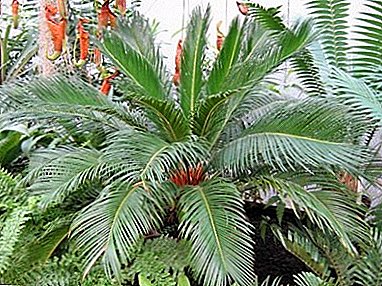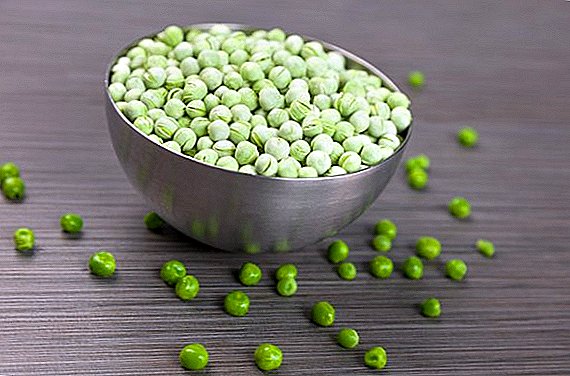 In alternative medicine, cumin is considered one of the most effective means to increase lactation during breastfeeding.
In alternative medicine, cumin is considered one of the most effective means to increase lactation during breastfeeding.
This article will discuss how to prepare and take the specified raw materials to young mothers, as well as the attitude towards him of official medicine.
Description and chemical composition of cumin
Cumin is a spice originally from Eurasia. The plant itself belongs to the umbrella family. It is found both in the wild and in the domestic form. Plant blooms umbrella-shaped white or pink inflorescences, covered with fruits of oblong form - this is the seeds of culture.  The plant is cultivated to produce spices almost everywhere. The taste of the seeds is spicy, and the flavor is spicy. Caloric content of 100 g of seasoning is 333 kcal.
The plant is cultivated to produce spices almost everywhere. The taste of the seeds is spicy, and the flavor is spicy. Caloric content of 100 g of seasoning is 333 kcal.
Read the table of the chemical composition of the plant:
| The concentration of vitamins in 100 g of cumin: | In small quantities are also present: |
| B4 - 24.7 mg | retinol - 0.383 mcg |
| ascorbic acid - 21 mg | B1 - 0,379 mg |
| beta carotene - 18 mg | B2 - 0.65 mg |
| Niacin equivalent - 3.606 mg | B6 - 0,36 mg |
| tocopherol - 2.5 mg | B9 - 10 µg |
Did you know? Man has long used the fruits of cumin - they were discovered by archaeologists in the tombs of the Egyptian pharaohs.
| Found in the composition and minerals useful for the body: | Nutritional value (per 100 g of product): |
| potassium - 1351 mg | proteins - 19.77 g |
| Calcium - 689 mg | Fat - 14.59 g |
| phosphorus - 568 mg | carbohydrates - 11.9 g |
| magnesium - 258 mg | dietary fiber - 38 g |
| sodium - 17 mg | water - 9.87 g |
| iron - 16,23 mg | ash - 5.87 g |
| Zinc - 5.5 mg | saturated fatty acids - 0.62 g |
| manganese - 1.3 mg | mono - and disaccharides - 0,64 |
| copper - 910 mcg | - |
| selenium - 12.1 mcg | - |
The benefits of cumin in breastfeeding
Useful properties of the plant are particularly relevant during the period of breastfeeding. The fact that the spice has a positive effect on the production of milk was noticed by the ancient healers.  The listed chemical elements represent a significant benefit in ensuring the biological processes associated with metabolism. Due to the presence of calcium in the spice, a good lactogonic effect is found. At the same time, the quality characteristics of breast milk are also improving.
The listed chemical elements represent a significant benefit in ensuring the biological processes associated with metabolism. Due to the presence of calcium in the spice, a good lactogonic effect is found. At the same time, the quality characteristics of breast milk are also improving.
A variety of infusions and decoctions on the basis of the fruit of the plant can inhibit fermentation reactions in the intestine. This reduces the risk of intestinal colic in the newborn.
In addition, hemoglobin increases, skin, nails and hair condition improves. Due to its high iron content, cumin is especially valuable for women suffering from anemia during the puerperal period. Ascorbic acid, contained in spices, increases the body's resistance to infectious diseases.
Can cumin be breastfed?
During the period of breastfeeding seasoning can be used as a prophylactic agent. However, a possible individual intolerance of the product cannot be ruled out - the plant can give allergies to the mother and child. It is manifested by rashes on the skin.
In rare cases, there is difficulty breathing, tearing, coughing and gastrointestinal upset.
Important! The lactogonic properties of cumin can turn into considerable harm for a woman - stagnant processes in the mammary gland with further inflammation are possible. This happens if the young mother has so much milk, but she nevertheless actively consumes funds on the basis of this plant.
Even in the absence of an allergic reaction, you should not abuse the spice of young mothers. The plant is rich in compounds that accelerate the process of assimilation of iron, which is potentially dangerous for the body (given that there is a lot of iron in the composition of the spice).  Be careful of the spice if you have been diagnosed with diabetes. The fact is that after a sharp completion of taking cumin, blood sugar can jump significantly.
Be careful of the spice if you have been diagnosed with diabetes. The fact is that after a sharp completion of taking cumin, blood sugar can jump significantly.
Natural medicine can not be abused as lactating mothers suffering from a stomach ulcer or gastritis.
Since cumin thins the blood, it is better to refuse to take it if you have undergone a cesarean section. In addition, the active withdrawal of fluid from the body increases the load on the kidneys.
Find out also what are the useful and harmful seeds of cumin.
How to use cumin to increase lactation
One of the most powerful tools to solve the problem of lactation crisis is an infusion of cumin. To get it 1 tbsp. l seeds in a thermos pot, pour 200 ml of boiling water on top. Screw the vessel lid on. After infusion for 5-6 hours, strain the liquid. Drink three times a day for 2-3 tbsp. l 30 minutes before applying the child to the chest.  The broth is prepared much faster. 2-3 art. l crushed seeds pour a liter of distilled water. Optionally, add sugar. Send the composition to the fire, bring to a boil and cook for another 7-10 minutes. Take the tool for 2-3 tbsp. l 3 times a day. Be sure to drink it warm and 20-30 minutes before breastfeeding.
The broth is prepared much faster. 2-3 art. l crushed seeds pour a liter of distilled water. Optionally, add sugar. Send the composition to the fire, bring to a boil and cook for another 7-10 minutes. Take the tool for 2-3 tbsp. l 3 times a day. Be sure to drink it warm and 20-30 minutes before breastfeeding.  To improve blood flow in the chest and improve the flow of milk helps massage the chest with oil from the fruits of the plant.
To improve blood flow in the chest and improve the flow of milk helps massage the chest with oil from the fruits of the plant.
Did you know? In Latvia, cheese with cumin is entered in the register of national dishes. It has the name "Yanov cheese" and is prepared only on holidays.
The extract of black cumin is especially useful. 1 drop of caraway extract mixed with 1 tsp. any cosmetic ester or vegetable oil. Apply the mixture of oils on the chest, avoiding the nipple area, then massage with light movements. 
Precautions when consuming cumin by a nursing mother
To protect yourself and your baby from undesirable phenomena, be cautious:
- To make sure that the child is not allergic, a nursing mother needs to take about 1 tbsp. l infusion or decoction of seeds. If during the day the state of health of the newborn remains normal, then the dose can be increased.
- Reception of decoction or infusion is permissible not earlier than one month after delivery.
- The daily dose of plant-based products should not exceed 200 ml.
- It is strictly forbidden to take cumin oil during lactation inside. Before external use, be sure to put a few drops on your wrist and watch your skin react. If there is no redness, you can safely use the oil.
Important! Before you start consuming cumin, you should certainly consult a doctor about the need for lactation enhancement.
As you can see, cumin seeds and butter are very valuable when breastfeeding. The main thing to remember is that each organism is individual. Together with your doctor, choose a recipe that is right for you to increase the production of breast milk.


